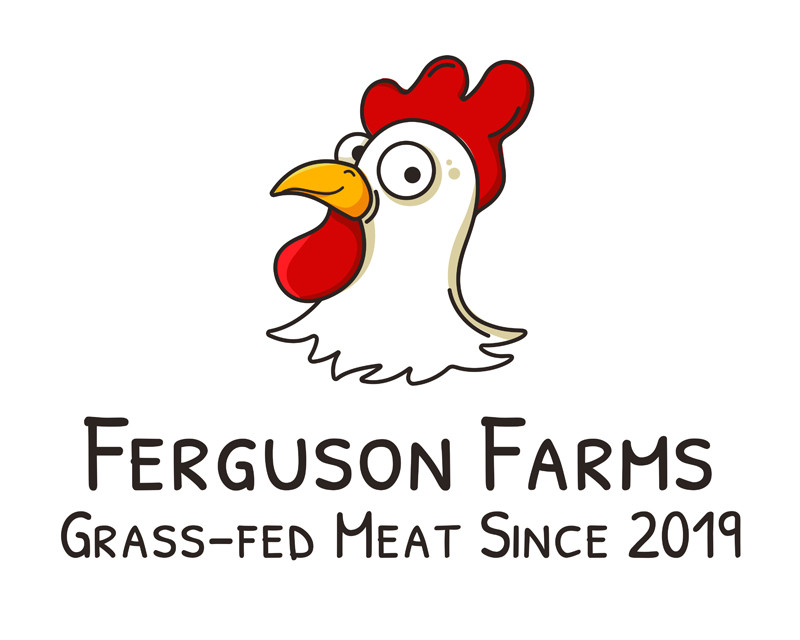Four Reasons You Should Choose Grass-fed Beef
posted on
September 7, 2022
People often ask whether it really makes that big of a difference – the answer is that it really does! There are scientific reasons for it that we understand, and there are ecosystem reasons because when animals are raised in the right environment, they actually build new soil, and that is a resource the planet is running out of as quickly as we are running out of freshwater.
Here are the big four reasons you should always choose grass-fed meat.
Reason #1: Factory Farms make aggressive pathogenic bacteria.

Let’s face it: feedlots are horrible places. International conglomerates force cows together in crowded conditions with barely enough room to even eat. Cows end up spending all of their time standing in their own filth, sometimes a foot or more of it.
Since this is a naturally disease-ridden environment that would kill most animals, companies use huge amounts of antibiotics to keep the cows from getting infections. The cows suffer, and their gut health goes down.
The end result is that your piece of inexpensive hamburger you are getting has a very high chance of being contaminated with things like E. Coli, or other bacteria that are not good for you.
Animals fed grass with enough room to move around, have a much lower bacterial load and the types of bacteria are less aggressive. That’s why you used to be able to eat a hamburger medium-rare, but you wouldn’t dream of doing that today with industrial meat. It’s not sanitary. Grass-Fed beef Isn’t pumped full of antibiotics
You wouldn’t believe it, but about 80% of antibiotics, made by pharmaceutical companies in the United States end up in animal food. You probably already know what happens when you overuse antibiotics. Bacteria become resistant to them, and then when you get an infection, maybe even from eating industrial meat, the antibiotics won’t work. Even worse, cows send a lot of the antibiotics that they eat out through their feces, which means that fully active antibiotics, end up back in the soil which destroys good soil bacteria and into the water, which makes everything around them sick and resistant to these vital drugs. This is one of the reasons that bacteria are becoming much more aggressive.
There’s one little problem that no one really talks about. It’s something called the plasmid system. Plasmids are like baseball trading cards that bacteria have except each card is good for a superpower. That means that two bacteria that aren’t very well related can meet, say in an overcrowded industrial feedlot, and then swap playing cards. What that means basically is that bacteria can swap their pathogenic abilities with each other very easily. And this is one reason that we have such a big problem. It’s plasmid trading between bacteria. Every time you choose to eat that tasty-looking piece of industrially raised meat, you are contributing to antibiotic resistance and soil destruction, because of the antibiotic problem.
It also turns out that when you feed corn and soy to ruminants like cows, their digestive tract isn’t well suited for it. So you end up getting animals that require more antibiotics.
It’s a descending spiral, with no positive end if we keep doing it. Overcrowded conditions, combined with food that makes animals sick, combined with conditions that make animals sick, combined with antibiotics that make bacteria more aggressive, can only lead to broad-scale environmental animal and human destruction.
Reason #2: Industrial beef destroys the soil, but grass-fed beef creates soil.
I already mentioned that adding bacteria to soil destroys the delicate balance of soil bacteria and soil fungus that are required for fertile soil. Microorganisms in soil, as well as plants that grow in soil, hold onto carbon dioxide, which as we all know, is becoming a problem. Building new layers of healthy soil across much of the earth will make a huge difference in cooling things down, as well as absorbing carbon. The good news is that if you don’t feed the wrong stuff to cows and you don’t put antibiotics in their food, you end up with the original intent of ruminant animals. Cows, sheep, goats, buffalo, and even things like camels, elephants, giraffes, zebra, and antelope, are designed for one major purpose – They walk around pooping indiscriminately. They do this because they are re-fertilizing the soil with nutrients and healthy bacteria that are required for soil.
What this means is that if you believe that we can all somehow go vegan and survive over time, you’re wrong. We need animal poop to grow healthy plants.
The millions of acres of corn and soy that grow without any animals in sight are depleting the soil, and farmers are using chemicals and minerals that come from mines in order to prop up the soil. However, those mines are running out of minerals. It’s a major problem that people don’t talk about very much. When you have a permaculture setup, like the one on my small family farm, which has a dozen sheep and a dozen pigs, we end up with wonderful lush grass and the most amazing soil that grows vegetables like you wouldn’t believe they taste different, and they are simply better for humans to eat. Everybody wins in an environment like this.
Reason #3 Grass-fed Beef is Better For you
When you feed corn and soy to animals, studies show that the animals take the types of fats, found in those plants and try to build cell membranes out of them. What it does is it breaks the healthy balance of fatty acids, so that when you eat a grain-fed steak, you’re actually getting the same fat that’s in corn and soy. And this is not ideal for your health.
When a cow is grass-fed and grass-finished, you actually get much higher levels of omega-3s and something that only comes from grass-fed cows called CLA, or conjugated linoleic acid. That means that you’re getting something that’s a little bit more like salmon than beef, at least from its fat composition, but it still tastes like really good beef.
You’ll also find that grass-fed meat has a much higher level of something called Carotenoid, which makes the fat, yellow, and yellow fat is a sign that your animal ate real plants instead of industrially-raised food on an industrial farm that is dipped in glyphosate, which is not a good idea.
Reason #4: Corn grain and soy used in feedlots are universally sprayed with harmful glyphosate.
This post isn’t going to go into all of the reasons that glyphosate is bad for you, except to say that glyphosate disrupts gut bacteria in a very meaningful way. It is also something that you don’t want in your environment if you are going to be a highly resilient human.
Eating animals that eat foods soaked in glyphosate has been proven to cause cancer.
Reason #5: Grass-fed beef prevents animal abuse.
If you look at the number of animals killed in the entire cycle of production for food, you’ll find that grass-fed beef has the lowest deaths per calorie of just about any food that you can imagine. Why? because cows that are allowed to forage on land that is not plowed and irrigated, do not kill other animals unless they accidentally step on a bug. However, once we plow, irrigate, and put in mono-crops with tractors, you’ll find that habitat destruction and tractor-kills caused the deaths of tens of thousands of animals per acre. We are talking bunnies, turtles, mice, rats, squirrels, ladybugs, grasshoppers… you get the point.
When you have 100 square miles of unending corn, sprayed with poison, without any trees, and without any bugs or birds, you’ve created an almost sterile environment. If you take that corn, and you feed it to cows, you’ve done great harm, because the cows suffer in tightly packed feedlots and animals are killed by tractors or entirely displaced.
If instead, you choose to eat grass-fed meat and less of it, because it does cost a little bit more, but not very much more, you end up spending about the same amount of money, feeling a lot better, and avoiding the problem of tens of thousands of animals dying, so that you can eat some industrially-raised meat that cost a little bit less.
On the other hand, one cow produces enough beef that if you ate a pound per day, you’re killing less than one-half of an animal per year.
Try it for yourself

So here’s your challenge – get enough grass-fed beef for a week. I recommend trying our 'Best of Beef Box'. This is our most popular box and we'll pick up the shipping cost.
Make a commitment to eat only grass-fed meat for one week and see how your joints feel, see how your brain feels, and see if you’re not buzzing with energy after a meal.
Just watch the difference in how you feel, and it will become very apparent to you that industrially raised, corn-fed meat is simply not good for you.




